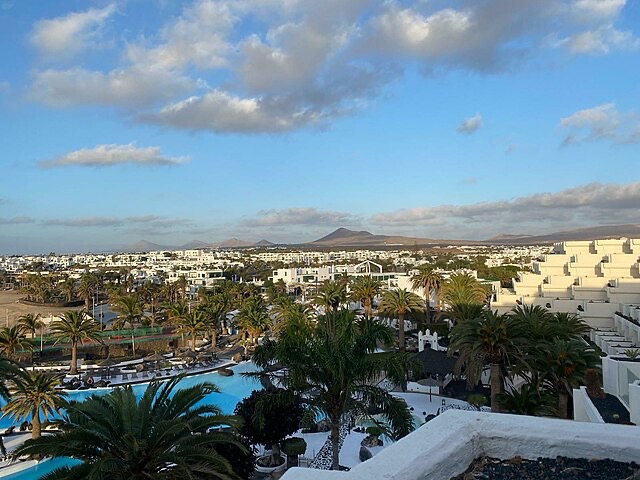Tenerife, a jewel of the Canary Islands and a long-standing favorite among British holidaymakers, is currently at the epicenter of a burgeoning anti-tourism movement. On May 18, 2025, approximately 130,000 residents took to the streets, voicing their frustrations over the overwhelming influx of tourists, particularly from the UK. The protests, marked by chants of “Britons go home,” underscore a growing tension between the island’s local population and the tourism industry that has long been its economic backbone.
The Scale of the Demonstrations
The mass protest, one of the largest in the island’s history, saw demonstrators clad in yellow shirts marching through key areas of Tenerife, including the capital, Santa Cruz. Placards bearing messages like “The Canary Islands are not for sale” and “More neighbors, less Airbnb” were prominently displayed. The protest culminated in the Plaza de España, where activists addressed the crowd, highlighting the detrimental effects of unchecked tourism on the island’s communities and environment.
Underlying Causes of the Unrest
At the heart of the unrest lies a confluence of socio-economic and environmental issues:
- Housing Crisis: The proliferation of short-term holiday rentals has led to a significant reduction in available housing for locals, driving up rents and making homeownership increasingly unattainable.
- Environmental Degradation: The surge in tourist numbers has strained the island’s natural resources, leading to concerns over pollution, waste management, and the preservation of delicate ecosystems.
- Infrastructure Strain: Public services, including healthcare and transportation, are reportedly overwhelmed, unable to cope with the demands of both residents and the ever-growing tourist population.
The Role of ‘Canarias Tiene Un Límite’
The activist group ‘Canarias Tiene Un Límite’ (The Canary Islands Have a Limit) has been at the forefront of organizing these protests. Their demands include:
- Implementing a moratorium on new tourist developments.
- Regulating short-term holiday rentals to ensure housing availability for locals.
- Introducing environmental protection measures to safeguard the island’s natural heritage.
The group has also announced plans for continued demonstrations throughout the summer, aiming to maintain pressure on both local authorities and the tourism industry.
Impact on British Tourists
British tourists, who constitute a significant portion of Tenerife’s visitors, have found themselves directly targeted during these protests. Instances of confrontations on beaches, with locals urging sunbathers to “go home,” have been reported. While some tourists have expressed understanding of the locals’ grievances, others have been taken aback by the hostility.
Travel agencies and airlines have noted an uptick in inquiries from concerned travelers, with some considering alternative destinations amidst the unrest.
Government and Industry Responses
In response to the escalating tensions, local authorities have proposed several measures:
- Reviewing and potentially revising tourism policies to address residents‘ concerns.
- Enhancing infrastructure to better accommodate both locals and tourists.
- Engaging in dialogues with activist groups to find common ground.
The tourism industry, while acknowledging the issues raised, emphasizes the sector’s importance to the island’s economy. Stakeholders advocate for sustainable tourism practices that balance economic benefits with the well-being of local communities.
Broader European Context
Tenerife’s protests are part of a wider trend across Europe, where popular tourist destinations grapple with the challenges of overtourism. Cities like Barcelona, Venice, and Amsterdam have witnessed similar movements, with residents demanding sustainable tourism models that prioritize local needs and environmental conservation.
Conclusion
The recent protests in Tenerife signal a critical juncture for the island’s tourism-dependent economy. As residents demand change, there is an urgent need for stakeholders to collaborate on creating a sustainable tourism model that respects both the local population and the environment. The path forward requires balancing economic interests with the preservation of the island’s unique cultural and natural heritage.
FAQs
Q1: Why are locals in Tenerife protesting against tourism?
A1: Residents are protesting due to issues like housing shortages, environmental degradation, and strained public services, which they attribute to mass tourism.
Q2: Are British tourists specifically targeted in these protests?
A2: While the protests address broader tourism concerns, some demonstrators have directed messages specifically at British tourists, urging them to reconsider their visits.
Q3: What measures are being proposed to address the situation?
A3: Proposed measures include regulating short-term rentals, implementing environmental protections, and revising tourism policies to prioritize local needs.
Q4: How is the tourism industry responding to these protests?
A4: The industry acknowledges the concerns and advocates for sustainable tourism practices that balance economic benefits with community well-being.
Q5: Are similar protests occurring in other parts of Europe?
A5: Yes, cities like Barcelona, Venice, and Amsterdam have also experienced anti-tourism protests, highlighting a broader European concern over overtourism.



